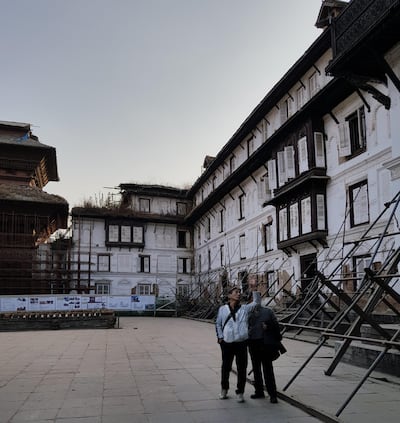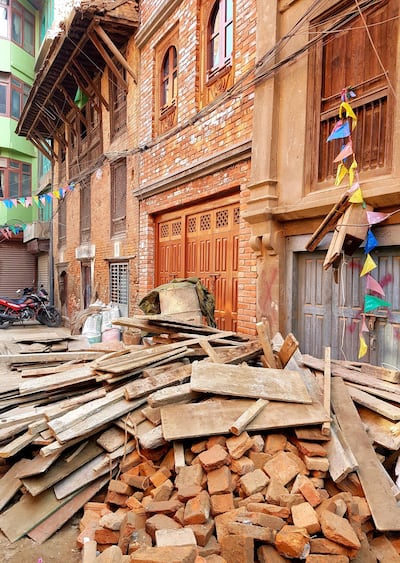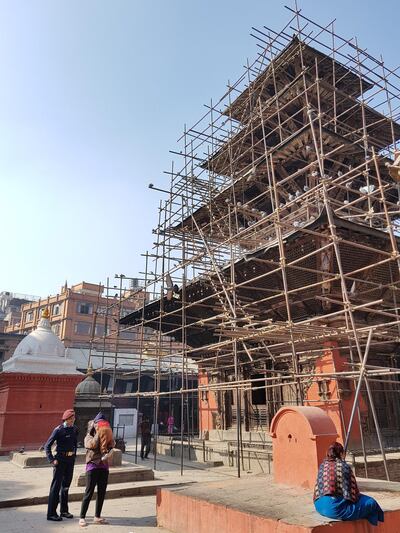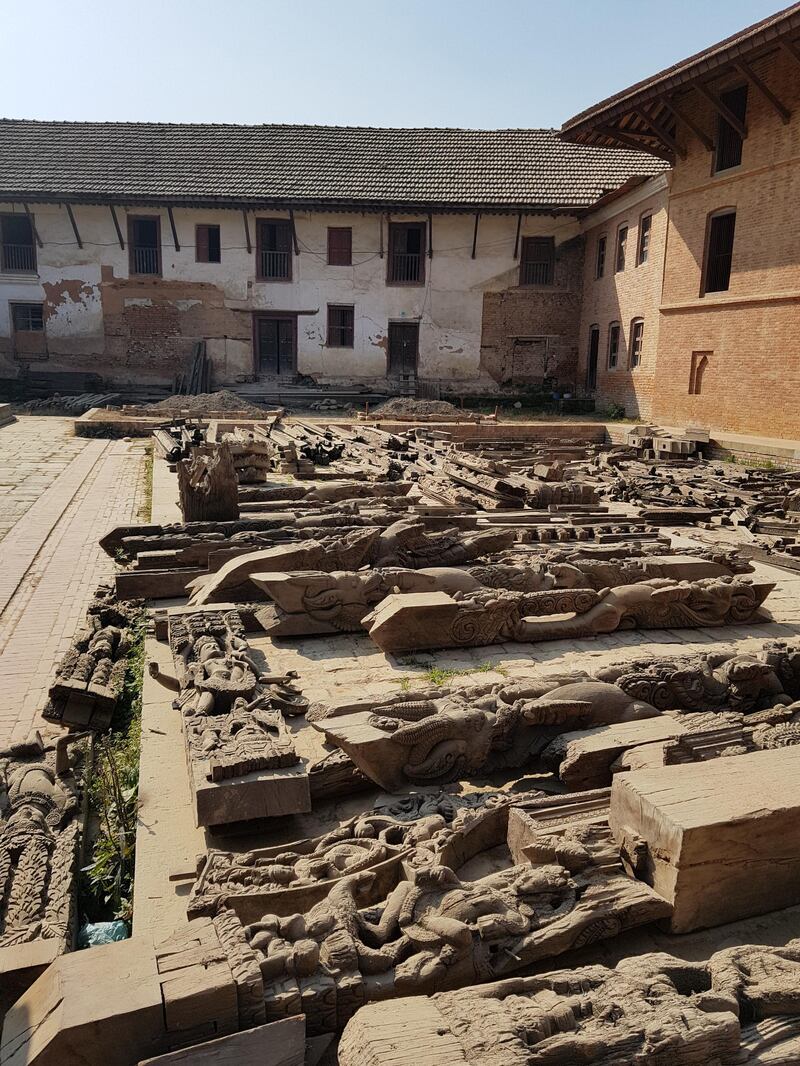Nepal's shattering earthquake of 1934 and its cataclysmic one in 2015 have left the country's rich heritage almost totally destroyed. The 7.8-magnitude quake in 2015 claimed close to 9,000 lives and caused the collapse of many Unesco World Heritage Sites. From Kathmandu's Durbar Square to the nearby Patan city, homes were flattened and about 750 of Nepal's cultural monuments were reduced to rubble. Three years later, painstaking efforts by the country's unified communities to rebuild their lost assets are slow, but more fruitful than they were in the past.
Political instability has drastically affected reconstruction, but a budget of 20 billion Nepalese rupees (Dh646 million) was allocated to repair the whole country, with promises of financial aid coming from countries including India, Hong Kong, China and Australia. However, considering what is needed to repair the environmental damage suffered by rural villages from earthquake-triggered avalanches, the country still labours under a Dh11.3bn funding gap.
The responsibility for reconstructing lost monuments has been adopted by Nepal's citizens. Tourism thrives in the Himalayan region as people come to witness and experience its unique culture. To sustain this, most houses lining the sides of the quiet, narrow alleyways in the historic city of Patan have been converted into bed and breakfast accommodation.

Now, through community activities and local businesses, the city showcases its historical, artistic and cultural value, while generating much-needed funds in the process.
Tall, colourful buildings with wood-carved window shutters stand next to properties reduced to bricks and jutting wires. The standing buildings' walls each have a different hue and style, and are in varying conditions of disrepair. Some Nepalese people lounge with their pets on their porches as labourers wield mallets and heave concrete. Nepal and its communities have been painted with a ghastly beauty.
"People build in traditional ways now. They have come to realise that apartments that look ethnic make more rent money than modern buildings. History is influencing modern construction here," says award-winning social entrepreneur Anil Chitrakar. "A lot of communities seem to be running businesses based on salvaging World Heritage Sites."
Despite suffering from its history of earthquakes and tremors, Nepal seems to have no hindrances when it comes to coping with periodic quakes. Its people believe that with each disaster, the knowledge and skills of a civilisation and its history are preserved.

The country is home to many artisans who constantly re-engage in creating and rebuilding with the aid of non-conventional guides. They refer to historical texts and fables that help them understand the original blueprints with which they repair, replace or recreate shattered buildings. Most of the famous pagodas currently under careful restoration are seen as examples of Nepal's unique style of construction, and have inspired multiple neighbouring monuments. China is particularly involved in providing assistance to Nepal and has offered to help with funding and damage repair.
On a typically chilly day at the construction sites, craftsmen and artists are often seated in small rooms that are open to the elements. Here, they work upon damaged religious monuments called stupas or on beams, which they weld and plate with gold. Each artefact is handled with care for detailed restoration.
________________________
Read more:
Forget Pop Idol – Nepal's 'Integrity Idol' is fuelling a movement for change
Surely those of us with the luxury of stability can do more to help the uprooted
Portrait of a Nation: Meet the Abu Dhabi nurse who runs towards a crisis
________________________
Donations based on faith are not uncommon in Nepal. People contribute to restoring gold monuments by giving their personal assets, which can range from chains to precious rings.
Outside the workshops are thousands of broken struts and statues from temples. These have been catalogued meticulously in order to be reassembled later. The temples gleam gold and crimson in the sunlight. Ancient carvings and baked roofs meet long wooden beams strategically placed at 45-degree angles from the stone-paved grounds.
To the sides, mighty structures that once towered into the sky are now supported within metal enclosures. Below, butter lamps glow and prayer wheels turn. Devotees are untroubled by the presence of these modern anomalies amid their beloved ancient buildings. There is faith in the country's restoration and the Nepalese people are its pillars. "Nepal is fatalistic. We always prepare for the next disaster," laughs Chitrakar. "It's a way of life. The earthquake may take down years worth of creativity and hard work, but it does not destroy the intangible.

“The festivities begin before anything is restored and the artists come together before the temples come together.”
The Nepalese people believe with every earthquake, their monuments and history become a little more unbreakable. Celebrations might be ongoing, but the country will have begun to prepare for the next disaster.
Although distressing, the terrible damage inflicted by earthquakes is significant to Nepal as it brings the country's communities together to retouch, experience and preserve their exquisite culture and art as it has been doing for years.
The earthquake in 2015 is no threat to this nation’s magnetic traditions and values. Most of Nepal’s monuments are expected to be completely rebuilt within the next ten years, but until then, this Himalayan nation refuses to let its faith and spirit falter.





